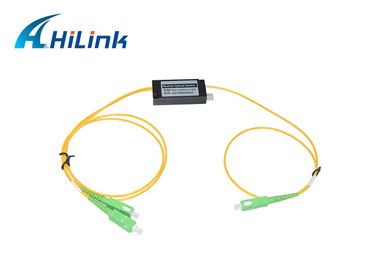Optical Switch: An Overview and Its Advantages
Jun. 28, 2023
In the field of telecommunications and data networks, the demand for faster and more efficient transmission of data continues to grow. Optical switches have emerged as crucial components in these systems, enabling the routing and management of optical signals. In this article, we will explore what optical switches are, how they work, and why they are chosen over alternative solutions.
What is an Optical Switch?
An optical switch is a device that controls the routing of optical signals in a network by selectively switching or redirecting them between different pathways. It enables the efficient management of optical data traffic, allowing for flexible and dynamic connectivity between various network elements. Optical switches operate in the optical domain, handling signals that are carried using light waves.
Working Principle:
The working principle of an optical switch varies depending on the specific technology employed. However, most optical switches function based on either micro-electromechanical systems (MEMS) or liquid crystal technology. These technologies allow for the manipulation of the light path and the redirection of optical signals.
2x2 Bypass Fiber Mechanical Optical Switch with Power Connector
Micro-electromechanical Systems (MEMS) Optical Switches:
MEMS-based optical switches use tiny mechanical components to physically redirect the light path. These switches consist of miniature mirrors or movable fiber arrays that can be controlled electrically. By adjusting the position of the mirrors or fibers, the optical signal can be selectively directed to the desired output port.
Liquid Crystal Optical Switches:
Liquid crystal optical switches utilize the optical properties of liquid crystals to control the passage of light. Liquid crystals can be manipulated by applying an electric field, altering their optical characteristics. By applying the electric field selectively, the switch can control the transmission or reflection of light, effectively redirecting the optical signals.
Why Choose Optical Switches?
High Speed and Bandwidth:
Optical switches offer extremely high data transfer speeds and large bandwidth capabilities. They can handle the transmission of massive amounts of data in a short time, making them ideal for applications requiring high-speed and high-capacity data communication, such as data centers, telecommunications networks, and cloud computing.
Low Loss and Signal Quality:
Optical switches minimize signal loss during the switching process, ensuring high signal quality and integrity. Unlike electronic switches that convert optical signals to electrical signals for switching, optical switches handle signals in their native optical form, reducing signal degradation and maintaining optimal performance.
Low Latency:
Optical switches exhibit low latency, enabling fast transmission of data with minimal delay. This is particularly important in real-time applications, such as video streaming, online gaming, and financial trading, where even small delays can have significant impacts.
Scalability and Flexibility:
Optical switches offer scalability and flexibility, allowing for easy expansion and reconfiguration of network connections. They can accommodate growing data traffic and changing network requirements without major infrastructure overhauls. This flexibility is crucial in dynamic environments where frequent changes in network topology or connectivity are needed.
Energy Efficiency:
Compared to electronic switches, optical switches consume significantly less power, making them more energy-efficient. Optical signals can be transmitted over long distances with minimal power loss, reducing the overall energy consumption of the network. This is particularly important in large-scale networks where energy efficiency and cost savings are priorities.
Secure and Immune to Interference:
Optical switches provide enhanced security and are immune to electromagnetic interference (EMI) and radio frequency interference (RFI). Optical signals are difficult to tap or intercept, providing a higher level of data security compared to electronic signals. Additionally, optical switches are not susceptible to external interference, ensuring reliable and uninterrupted data transmission.












